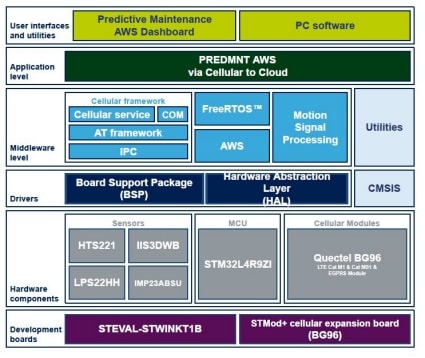The HL7802 module for Cat-M1/NB1 worldwide networks with 2G fallback is fully compliant with the 3GPP Release 13 standard and is Release 14 ready to support NB2 features in the future. The command below will use the Network Manager to create a new connection with the appropriate settings. Sudo nmcli con add con-name 'USRP 2974 10Gbps' ifname enp1s0f0 type ethernet ip4 192.168.40.1/24 mtu 9000 The Port 1 SFP+ interface (enp1s0f1) is not directly connected to the radio, and does not need to be configured.
CAT-4 High Speed Broadband Access Chipset
- Multi-mode LPWA module offering best-in-class power performance for global LTE-M, NB-IoT, and GNSS networks The HL7800 module for Cat-M1/NB1 worldwide networks is fully compliant with the 3GPP Release 13 standard and is Release 14 ready to support NB2 features in the future, providing a new low-cost, best-in-class power technology for low.
- LTE Radio Technology Support. CAT-M1 R13 with DL/UL speeds of 300/375 Kbps; CAT-M1 R14 with DL/UL speeds of 588/1119 Kbps. CAT-NB1 R13 with DL/UL speeds of 27/65 Kbps; CAT-NB2 R14 with DL/UL speeds of 127/158 Kbps.Release 14 features are available with a.
Architected to support the most advanced LTE and LTE-A standards, this chipset and software platform sets the benchmark for high speed broadband access performance, power consumption and cost.
The chipset includes a baseband processor and an RF transceiver as a highly optimized and system-tuned solution, together with a set of turnkey hardware and software reference designs, accelerating product time to market and minimizing development and carrier acceptance investment.
The ALT3800 chipset is used in a wide variety of devices, including tablets, netbooks, connected consumer devices, dongles, indoor and outdoor CPEs, mobile hotspots and M2M modules.
The ALT3800 leverages highly mature, carrier-certified and mass market deployed software as well as a comprehensive manufacturing and test solution ecosystem.
LTE
- 3GPP Release 9 and GCF Compliant
- FDD and TDD support with real time handover
- CAT-4 throughputs (150/50 Mbps DL/UL)
- Evolved Multicast Broadcast Service (eMBMS)
- Integrated VoLTE with HD voice support
- Integrated IMS and OTA-DM
SoC and Software
- 3rd generation Software Defined Radio (SDR) architecture featuring high flexibility with extremely low power
- High performance CPU subsystem with native Linux and user space application support
- Pre-integrated high performance Wi-Fi routing stack/drivers
- Extremely low power consumption
- Robust, carrier certified and field hardened protocol stack and L1 software
- OS drivers – Android, Linux, Win 7/8.1, MAC OSX, Chromebook
RF Features
- System-level optimized and tuned RF transceiver
- Six RF ports supporting multiple FDD/TDD band combinations between 400 – 3800 MHz
- SAW-less TX operation
- Integrated LNAs
Interfaces
- USB2.0/HS/OTG, HSIC, SDIO 3.0 host/device, I2S/PCM, RMII/RGMII, USIM, UART
Interference cancellation
- Altair’s proprietary INCA™ noise cancellation technology
Products
Related Resources
USB is a popular way to connect broadband networking devices to consumer PCs. Notable applications include LTE modems, cable modems and ADSL. MCCI® offers complete driver and firmware solutions for USB networking. Off-the-shelf eval drivers are available for Windows platforms.
The easiest way to understand the architecture of USB networking drivers is to start by considering a USB to Ethernet adapter. In this case, the Ethernet Network Interface Controller (NIC) is connected to the user’s computer using USB. If a USB-to-Ethernet bridge is being used, the USB bus, an Ethernet NIC, and a physical Ethernet segment will all be present. If the NIC has been integrated into the target device (for example, as in a LTE modem or a cable modem), the software on the PC is the same, but the physical Ethernet segment is replaced by a software “virtual” Ethernet segment.
Although the following discussion focuses on CDC Ethernet as the transport protocol, it is equally true for CDC Network Control Model (NCM) — NCM is faster, but the architecture is the same.
Figure 1 compares the USB remote NICs to local NIC architectures.
Figure 1. Remote NIC System Diagram
Figure 2 illustrates the virtual Ethernet architecture used in USB cable modems and home networking/SOHO routing applications.


Figure 2. Virtual Ethernet Architecture
Notice that the presence of two NICs implies that there are two Ethernet addresses embedded in the USB device. One would be associated with the NIC that was previously in the host; and one is associated with the NIC that was previously in the device. Frequently, however, this extra Ethernet address can be eliminated, because of the point-to-point nature of the link, especially if (as in cable modems) another NIC already has an Ethernet address assigned; the cable modem NIC address can also be used on the virtual Ethernet.

MCCI Network Driver Architecture for Windows
Figure 3 shows the driver architecture for Windows. For architectural reasons, MCCI uses a two part driver; this simplifies management, and separates the portion of the driver that’s responsible for the NDIS interface from the portion of the driver that’s responsible for the USB network protocol. Different versions of Windows use different versions of NDIS. With this architecture, MCCI can provide identical code at the USB layer in a way that is independent of NDIS version. When necessary, we substitute a different miniport layer that is tailored for the NDIS version used by the target version of Windows; but the USB layer doesn’t need to change.
Figure 3. Windows Software Architecture — Networking
Firmware Architecture for USB Networking Devices

A matching firmware architecture for a USB device implementation is shown in Figure 4. For more information see the MCCI USB DataPump Network Drivers.
Figure 4. Virtual Ethernet Device Block Diagram
Altair Lte Network Interface Driver Windows 10
The nature of, and the requirement for, the virtual Ethernet layer is somewhat application dependent. In many cases, especially if only one USB device port is to be supported, the Application NIC driver and the Virtual Ethernet can be integrated, resulting in increased efficiency.




